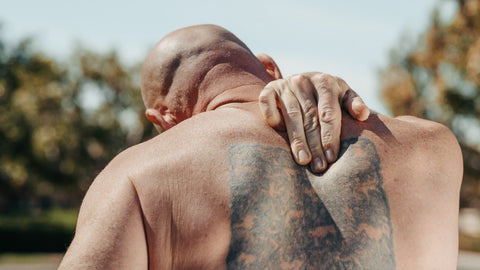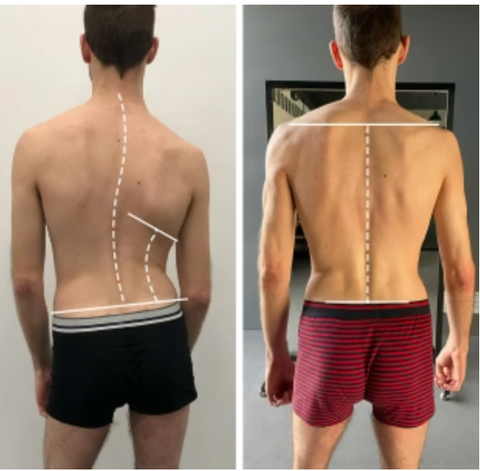INTRODUCTION
The push up workout is one of the oldest and most popular forms of exercise. Dating back thousands of years, it was originally used for military training in ancient India. This classic move is straightforward and encompasses numerous variations. Some of these include wide push ups, incline push ups, pike push ups, scapular push ups, plyo push ups and knee push ups, making it a staple in most body weight training regimens.
Many people tend to get caught up in thinking about how many push ups should I be able to do and how many push ups a day is best. While these thoughts are valid we will strive for the reader to dig deeper into understanding their relationship with fitness.
This article will dive into the perceived benefits and potential harms of the push up while addressing some commonly asked questions such as:
What are the benefits of push ups? What is the proper form for push ups? Can push ups improve my posture?
We will also cover a brief history of the human organism, showcasing that although push ups for the chest and biceps can work, you may be getting ahead of yourself with this movement.
WHAT ARE THE BENEFITS OF THE PUSH UP?
On the surface:
- Targets multiple muscle groups
- Increases upper body strength
- Reduces the risk for cardiovascular disease
- Improves posture
When analyzing these observations, it raises the question, what type of reality are we preparing our body for?
First, let’s look at the mechanics the push up. The exercise involves moving the body up and down while laying face-down, primarily in the sagittal plane of motion. This is the plane that moves forward and backward. Our body actually moves in three different directions when we stand up: forward and backward, side to side, and horizontal rotation. The SAID principle in training says that our body will adapt to the demands we put on it. So, if we keep doing the push up, our body will only get better at moving in that one direction and may not be as adaptable to other movements as we think.
The human gait cycle, or the pattern in which we walk or run, is a great example of this. As this is a very complex movement pattern, one simple observation is that our legs oscillate as we move forward. While people should be able to perform a push up and not injure themselves, it simply doesn’t help with the movements of walking and running, which are more fundamental to the human condition.
So does this mean you should skip push ups altogether? Not necessarily. That said, we must understand that push ups are more advanced than people think, so establishing a well tensioned foundation is pivotal.

CAN THE PUSH UP BE SETTING YOU UP FOR PAIN AND INJURY DOWN THE ROAD?


Will the incline push up or scapular push ups account for your current imbalances and lead you to a more resilient body? Almost everyone has asymmetries they are dealing with in their body and when bodies are asymmetrical it is more difficult to pack on functional muscle and stay fit. By doing things like push up challenges or 100 push ups a day, you could be compounding more imbalances than you think.
Incorrect form and overuse are the most common ways people injure themselves when performing push ups. This can potentially cause irreparable damage to the joints and muscles surrounding the shoulders and elbows. Along with this, there are studies that showcase other adverse effects such as neck pain, back pain, palmar pain and wrist pain. In the second study, the mean age of the eleven recreationally trained male volunteers was 27 years old and it was found that “for individuals unable to tolerate high lumbar compressive loads, potential benefits gained by incorporating suspended push ups into their resistance training regimen may be outweighed by the risk of overloading back-tissues.” This tells us that even with male participants in their prime, a strong and durable body is essential for the push up and its variations.
Unhealthy joints can present itself in many ways such as:
- Pain: pain in the affected joint is often the most prominent symptom of joint issues.
- Stiffness: joint stiffness can make it difficult to move the affected joint and may be worse in the morning or after prolonged periods of inactivity.
- Swelling: swelling around the joint can cause a feeling of tightness or pressure and may be accompanied by warmth or redness.
- Crunching or popping sounds: if there is damage to the cartilage or other structures in the joint, you may hear popping, clicking or crunching sounds when you move the joint.
- Weakness: joint problems can also cause weakness in the affected area, making it difficult to bear weight or perform certain activities.
- Reduced range of motion: joint problems can limit the range of motion in the affected joint, making it difficult to move the joint as far as you used to or perform certain movements.
At Functional Patterns we are adamant on training with movements that yield low risk and high reward for our body. An important question to ask could be, is performing the push up on a consistent basis worth more than the health of my joints?
CAN PUSH UPS IMPROVE YOUR POSTURE?
Is the improvement in posture simply just pinning your shoulders back and expanding the chest?
In the fitness industry, it’s common to believe that strengthening specific muscle groups improves posture and performance. However, this way of thinking is limited. Specific and precise stimuli in relation to what an individual needs is what ultimately improves posture and performance. You wouldn’t train a fish to move on a land, you would train it in water. Therefore we must respect the environment and context in which humans adapted.
Muscles like the pecs, shoulders, triceps, biceps, back muscles, abs, and glutes are the common areas that professionals will say the push up workout can strengthen when done correctly. Although push ups could lead to some gains in the upper body, hips and core it is completely detached from how the human musculature evolved to be in the first place.
Take a moment to think about how these muscles came into existence. The transition from quadrupedalism (walking on four limbs) to bipedalism (walking on two limbs) was the main driver in allowing for these muscles to develop. This transition freed up the hands and arms, which allowed for great use and manipulation of tools and objects. This also created a shorter and wider pelvis than that of other living primates. The exertion of force through muscles in our hips and legs rather than along our backs and shoulders, as our quadruped ancestors do, gave us the capacity to stride and transfer our weight smoothly from side to side, ultimately transforming the human body into what it is today.
It is clear that the muscles used in a push up did not actually come into existence from doing push ups but more likely from running.
The push up has been around for thousands of years yet humans have been bipedal for at least 4 million years and have been throwing accurately and forcefully for at least 2 million years. When training to improve your posture and gait, physics matters. The FP First Four takes this into consideration when assessing and training the human organism via standing, walking, running, and throwing.

SOLUTIONS
Although the push up is okay as an exercise, it comes with consequences. An alternative that is much less risky is the FP Contralateral Step Press.
This movement involves taking a forward step while performing a single-arm press with a weighted pulley or resistance band.
The benefits of this movement include:
- Development in the pecs, core, biceps, triceps, and glutes
- Improvement in walking and running economy
- A more upright standing posture
- Cardio training with far less risk of injury
- Strength development while improving mobility
- A more athletic physique

Cerebral Palsy posture results by FP practitioner David Bartalos and client Rudy
Just like the pushup, this movement has great variability to it. Depending on the person, it can be adjusted to meet their needs and progressed accordingly from there.
Performing this movement correctly does require you to first understand your own unique postural challenges. This will then ensure that you will be able to create the necessary modifications in order to maximize your gains.
How do I better understand my own unique postural challenges?
The Functional Patterns 10 Week Program is your starting line for this process.
This program contains 47 different techniques and 12 hours of video content that all come together to help you optimize and figure out your body. This course will help you re-approach fitness with a new and more reliable framework.
CONCLUSION
While you may see some short term physique and postural gains from doing wide push ups, incline push ups and pike push ups, they may cause long term damage. Just because 100 push ups a day gives you a “good workout” and is easily accessible, we don’t want to get ahead of ourselves. To avoid the cycle of workout, pain, rehab, repeat, we need to understand our biomechanics at a fundamental level. This is more important than worrying about how many push ups should I be able to do. We must ask ourselves why we are doing push ups in the first place - to address the root of our problems or to participate in a trend. How many push ups a day is trivial when taking into account our evolution as a species. At Functional Patterns we prioritize human biology and all the factors that contribute to strength, endurance and posture to promote pain-free living.
References:
-
Chuckpaiwong B, Harnroongroj T. Palmar pressure distribution during push-up exercise. Singapore Med J. 2009 Jul;50(7):702-4. PMID: 19644626
-
Beach TA, Howarth SJ, Callaghan JP. Muscular contribution to low-back loading and stiffness during standard and suspended push-ups. Hum Mov Sci. 2008 Jun;27(3):457-72. doi: 10.1016/j.humov.2007.12.002. Epub 2008 Mar 24. PMID: 18362038.
-
Magazine, S. (2021, August 3). Five Ways Humans Evolved to be Athletes. Smithsonian.com. Retrieved March 15, 2023, from https://www.smithsonianmag.com/science-nature/five-ways-humans-evolved-be-athletes-180978333/







